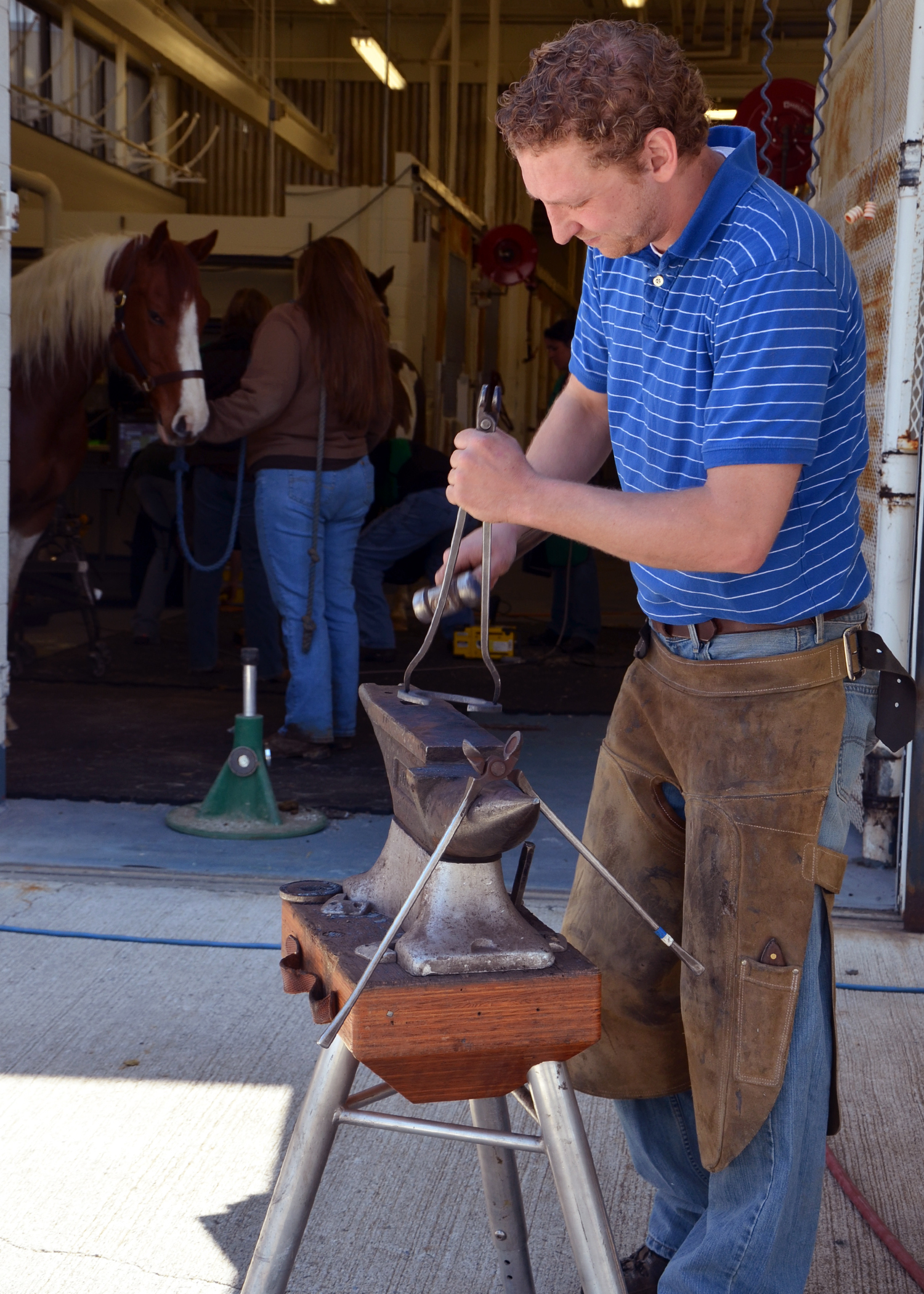Award-winning farrier blends art, science in equine hoof care at veterinary college

Travis Burns discovered his calling at a young age. While visiting a family-owned riding stable in the Great Smoky Mountains, he watched his uncle use both blacksmithing and knowledge of equine anatomy to shoe the farm’s horses.
That early fascination turned into a career for Burns and has resulted in national and international recognition for his work as a farrier at the Virginia-Maryland Regional College of Veterinary Medicine at Virginia Tech, one of only a handful of veterinary colleges with an in-house farrier.
“Travis Burns brings a special set of skills, knowledge, and experience in his role as the college’s farrier, and he is more than deserving of recognition for his growing list of accomplishments,” said Dr. David Hodgson, head of the Department of Large Animal Clinical Sciences.
One of those accomplishments puts Burns in elite company. He’s one of only 16 farriers in the United States to be named an associate in the Worshipful Company of Farriers, a London-based trade association founded in 1605. He earned that recognition from the group last October by an examination that assessed his knowledge of anatomy, conditions and diseases of the foot, how conformation affects the gait and the foot, and vice versa.
Burns also had to demonstrate traditional forging skills and be able to apply them to an individual horse, as well as show a range of shoemaking skills in different materials including fabricating. His ability to think on his feet was scrutinized and he also had to be comfortable looking at X-rays and assessing a horse with a veterinary surgeon.
Burns also earned a specialty “therapeutic” endorsement from the American Farriers Association last year. To be eligible for the endorsement, candidates must have five years of experience in the specialty and have earned the Certified Journeyman Farrier certification, the association’s highest level of certification. To receive the therapeutic endorsement, a farrier must also demonstrate knowledge of the practical and theoretical issues of foot and hoof pathology through a written examination and case presentations and pass a specialty forging examination. Burns is one of a small number of farriers with this specialty endorsement in the United States.
“A successful farrier not only knows how to appropriately fit and shoe a horse, but also has a science-based understanding of equine anatomy and physiology,” said Burns, who attended the North Carolina School of Horseshoeing and received a bachelor’s degree in animal science from North Carolina State University.
Burns puts both the art and science of equine hoof care to use in his daily work at the Veterinary Teaching Hospital. He is a member of the hospital’s new equine podiatry unit and provides farrier care for patients at the hospital, for Virginia Tech’s equestrian programs, and for select performance horses.
“About half of the cases we see are referrals from veterinarians and farriers in need of therapeutic care, such as a horse in need of a specialized shoe to treat an orthopedic condition,” Burns said. He explained that farriers must not only trim and balance the foot, but must also make and fit horseshoes by hand.
His clients have ranged from horse hobbyists in the region to a competitor in the 2012 Summer Olympics in London. He also served as an official farrier at the 2010 World Equestrian Games in Lexington, Ky.
“Travis not only does a good job doing what he does, but he also has the knowledge and skills to treat special cases,” said Lisa Moye of Blacksburg, Va., whose competitive trail riding horse, Chief, has soft hooves and requires horseshoes. “He makes each shoe to fit each hoof.”
Burns joined the Veterinary Teaching Hospital in 2010 following positions as an intern and associate farrier at the college’s Marion duPont Scott Equine Medical Center in Leesburg, Va. He previously served as a farrier with Forging Ahead Farrier Associates in Loudon County, Va.
This article was written by Michael Sutphin.







